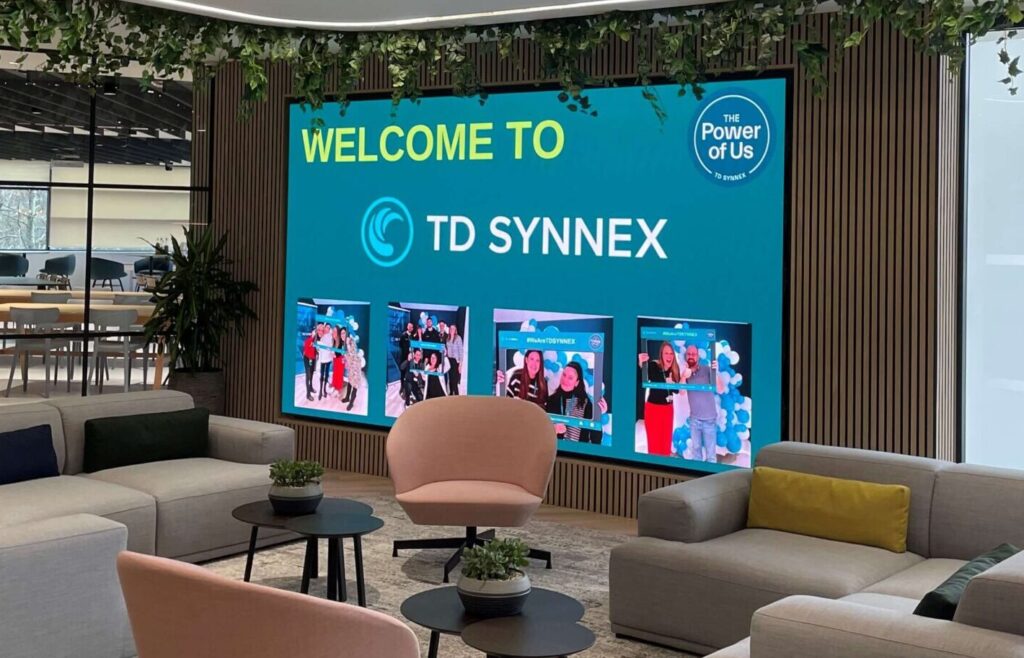Oxygen Must-Know Distributors is back, and this year we’ve finally caved to demands to add ‘Marketplaces’ to the title.
The 50 IT distributors (and, yes, marketplaces) featured in this report, which is Powered by Pimberly, returned to growth in their latest years on record, notching up collective sales of £15.1bn.
See who made the cut here.
Sitting as they do between the IT vendors who make the hardware and software and the MSPs and VARs who deliver these solutions to end users, this half-century of middle-tier players are the glue that holds the IT channel together.
But in case you hadn’t noticed, they’re also in the midst of an identity crisis.
Self-styled ‘cloud commerce marketplace’ Pax8 in March took out a full-page New York Times advert to accuse the world’s two largest distributors of “selling the past”.
And the 20th-ranked outfit in this report isn’t the only one distancing itself from the term, with 3rd-ranked Ingram (one of the two firms Pax8 sought to pillory) increasingly positioning itself as a “platform company”.
To rub salt in the wounds, Omdia recently doubled down on its characterisation of AWS Marketplace as a distributor, with Chief Analyst Jay McBain asserting in February that the hyperscaler will be a top-five global distribution player “soon”.
Revenues rev up to £15.1bn
Whatever they’re calling themselves, these 50 firms enjoyed a moderate rebound in fortunes in their latest financial year (as discussed by Pimberly VP Tim Bodill below – see his comments in full here).
Among those who reported or disclosed to us two years of numbers, collective revenues rose 3.7% to £15.1bn (following a 2.4% dip among those featured in last year’s report).
This is in line with the latest data from market watcher Context, which registered a 6.5% year-on-year rise in UK IT distribution sales in Q2 amid synchronised” growth across all three B2B channels”.
Topping the Must-Know Distributor standings this year is TD Synnex (you can read more about the controversy surrounding this in the profiles), whose UK&I VP Dave Watts warned that market conditions remain unforgiving despite the 7.4% growth it achieved in its latest annual period, however.
“There’s no question the market has been challenging in many areas. Much of our UK&I growth this year will be through winning additional market share,” Watts said.
Who are our ‘Must-Know’ 50?
Oxygen Must Know Distributors and Marketplaces, Powered by Pimberly, ranks the top 50 UK IT distributors on our radar in approximate size order (we fell back on headcount data where revenues weren’t available)*.
They range from the giant broadliners such as TD Synnex, Ingram and Westcoast, to niche VADs specialising in technologies such as cyber, components, storage, print, AV and enterprise software.

Flying in the face of the perception in some quarters that IT distribution is a relatively staid sector, some six of the 50 were founded this decade.
We attempted to identify a UK revenue tally for the top 10, as well as the UK arms of smaller internationally headquartered players (such as Climb, Pax8 and EET). But overseas contributions were permitted for everyone else.
Some 43 of the 50 profiles feature quickfire Q&As with senior management at each firm.
We asked them which vendors and technologies have lit up their 2025, their priorities for the 12 months ahead, and what they see as the most underrated facets of their businesses.
In a new development, we also invited them to disclose how many UK resellers and MSPs they serve. Of the 35 distributors game enough to divulge this stat, the tally ranged from as low as 30-40, to as high as 6,000 (with the mean and median standing at 1,358 and 900, respectively).
That compares with the 11,492 UK MSPs uncovered in a recent government study.
“It was an assertion of individuality”
We also asked what they made of Pax8 questioning their very identity in its New York Times stunt.
“Pax8 criticising the very thing they do is bold,” was the blunt response of Mukesh Gupta, CEO of 22nd-ranked outfit e92plus.
Others had more sympathy with their belligerent peer, however, with Will McIntee, a VP at 39th-ranked Companial acknowledging he himself “can sometimes be a bit prickly about the term ‘distributor’”, and Joel Chimoindes, CEO of 24th-ranked Nuvias UC, saying “I thought it was great”.
“In my opinion, it was an assertion of individuality and a desire not to be tarnished with the low multiple of hardware distributors in the public markets,” opined Dave Stevinson, CEO of 11th-ranked QBS Software, which now styles itself as a ‘software delivery platform’.
However its key protagonists brand themselves, the distribution market has seen its fair share of consolidation in the last 13 months (with three of the four largest companies in this report changing ownership, or gearing up to).
2nd-ranked Westcoast has joined forces with ALSO to create a pan-European monster with €15bn revenues, while 4th-ranked Exertis IT is about to be sold to private equity firm Aurelius.
3rd-ranked Ingram Micro and 6th– Exclusive Networks have also changed ownership, moving from private to public ownership and vice versa, respectively, with 45th-ranked Prianto and 36th-ranked Brigantia among the smaller outfits in this report selling up in recent months (to QBS and Elovade, respectively – see here and here).
“Distribution isn’t dying”
In another striking trend, industry grandees have become the must-have accessory for IT distributors in 2025.
26th-ranked Northamber snared Wick Hill founder Ian Kilpatrick as a non-exec last month, following similar moves by QBS (which enlisted former Computacenter UK and Westcoast MDs Kevin James and Alex Tatham as non-execs last October) and 10th– ranked Infinigate (which hired former Softcat CEO Graeme Watt as its President last September).
Despite their rising top lines, headcount (at least among those for which we could locate two years of data) is down by around 2% to 6,500, suggesting distributors are doing more with less.

Although the events of the last two years could have dented their elan, the MDs we spoke to maintain supreme confidence in their businesses and the sector.
Asked to put a 1-10 score on how optimistic they are about the IT distribution market right now, the 32 game enough to answer gave an average mark of 8.7 (with two – including Hayley Roberts, who heads up 25th-ranked Distology – putting ‘11’).
“For 20 years I have heard distribution is dying, and it isn’t; it just changes more than sometimes people give it credit for,” said Chris Walsh, MD of 47th-ranked ABC Distribution (who gave a score of ‘9.8’ on this question).
See who made the cut for the top 50 here.
Must-Know Distributors and Marketplaces is Powered by Pimberly. Find out more about why Pimberly is backing the report here
*We generally eschewed those with a focus on IT-adjacent technology and products such as those whose main business is office products, industrial components or mobile phones.
Tier-one vendor relationships was another pre-requisite, meaning brokers, sub-distributors and second-user players don’t feature in this list.
Although revenue and headcount numbers were in most cases based on information in each firm’s latest annual accounts filed on Companies House, in a few cases we went by numbers split out by management.
We sought to feature every major IT distributor with revenues of over £20m, whether management helped us with the profile or not. For smaller distributors, we were often reliant on assistance from management, meaning that several disties on our radar sadly don’t feature in the rundown. We will, of course, endeavour to add any that we missed next time around.
Doug Woodburn is editor of IT Channel Oxygen
















